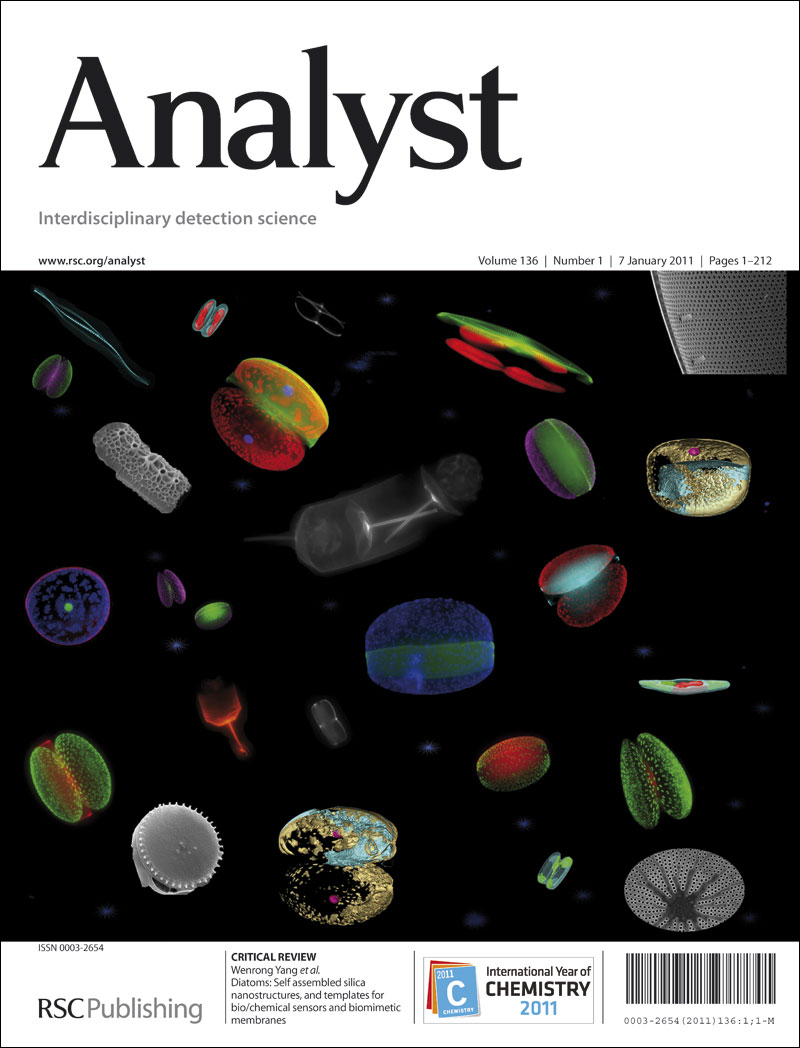Single-cell western blotting of cytoplasmic cytokeratin 8 proteoforms.
IF 3.3
3区 化学
Q2 CHEMISTRY, ANALYTICAL
引用次数: 0
Abstract
Differential detergent fractionation (DDF) enables compartment-specific lysis, offering a strategy to analyze cytoplasmic proteins while preserving the nucleus for downstream assays. However, while this method facilitates sub-cellular resolution, current single-cell approaches using DDF remain limited in their ability to identify proteoforms without compromising nuclear integrity. This limitation is especially pronounced in proteins where their proteoforms present diverse biological functions such as cytokeratin 8 (CK8), a structural protein implicated in several disease states. Here, we present a single-cell western blot (scWB) integrated with DDF to selectively solubilize and separate CK8 proteoforms while preserving nuclear integrity. To evaluate assay applicability and nuclear stability, we profiled CK8 across breast cancer cell lines (MCF7, SKBR3, and MDA-MB-231), confirming proteoform detection only in MCF7 and preservation of nuclear content across all lines. We report on assay development, including screening a panel of lysis buffers based on nonionic detergents, and electrophoresis conditions to achieve a separation resolution between two proteoforms of up to 0.94, while preserving an intact nucleus. The cytoplasm-specific lysis (DDF buffer) yielded detectable proteoforms in 14.3% of solubilized single cells, comparable to 10.3% with whole-cell lysis (RIPA buffer). Our approach allows for tailored solubilization, achieving reliable proteoform detection and nuclear retention across different cell types. Proteoform profiling at the single-cell level forms a basis for the exploration of the role of specific CK8 molecular forms in cellular processes.细胞质细胞角蛋白8蛋白形态的单细胞免疫印迹。
差异洗涤剂分离(DDF)实现室特异性裂解,提供了一种分析细胞质蛋白的策略,同时保留了下游检测的细胞核。然而,虽然这种方法促进了亚细胞分辨率,但目前使用DDF的单细胞方法在不损害核完整性的情况下识别蛋白质形态的能力仍然有限。这种限制在其蛋白形态具有多种生物功能的蛋白质中尤其明显,例如细胞角蛋白8 (CK8),这是一种与几种疾病状态有关的结构蛋白。在这里,我们提出了一种与DDF结合的单细胞western blot (scWB)方法,可以选择性地溶解和分离CK8蛋白,同时保持核的完整性。为了评估该方法的适用性和核稳定性,我们对乳腺癌细胞系(MCF7、SKBR3和MDA-MB-231)的CK8进行了分析,证实仅在MCF7中检测到蛋白样,并且在所有细胞系中都保留了核含量。我们报告了分析的发展,包括筛选一组基于非离子洗涤剂的裂解缓冲液,以及电泳条件,以实现两种蛋白质形态之间高达0.94的分离分辨率,同时保留完整的细胞核。细胞质特异性裂解(DDF缓冲液)在14.3%的溶解单细胞中产生可检测的蛋白形态,与全细胞裂解(RIPA缓冲液)的10.3%相当。我们的方法允许量身定制的增溶,实现可靠的蛋白质形态检测和核保留跨越不同的细胞类型。单细胞水平的蛋白质形态分析为探索特定CK8分子形态在细胞过程中的作用奠定了基础。
本文章由计算机程序翻译,如有差异,请以英文原文为准。
求助全文
约1分钟内获得全文
求助全文
来源期刊

Analyst
化学-分析化学
CiteScore
7.80
自引率
4.80%
发文量
636
审稿时长
1.9 months
期刊介绍:
"Analyst" journal is the home of premier fundamental discoveries, inventions and applications in the analytical and bioanalytical sciences.
 求助内容:
求助内容: 应助结果提醒方式:
应助结果提醒方式:


